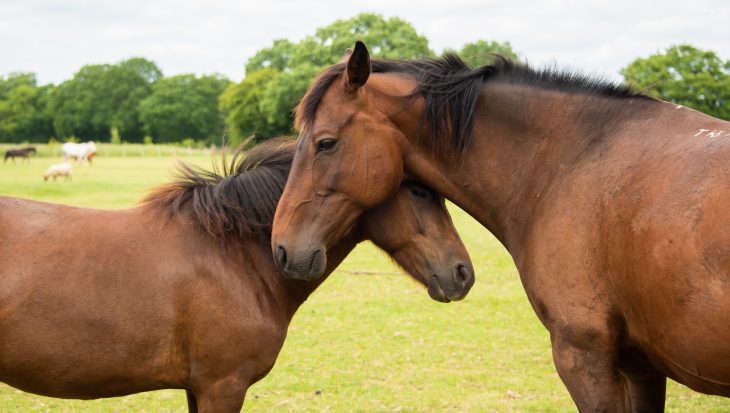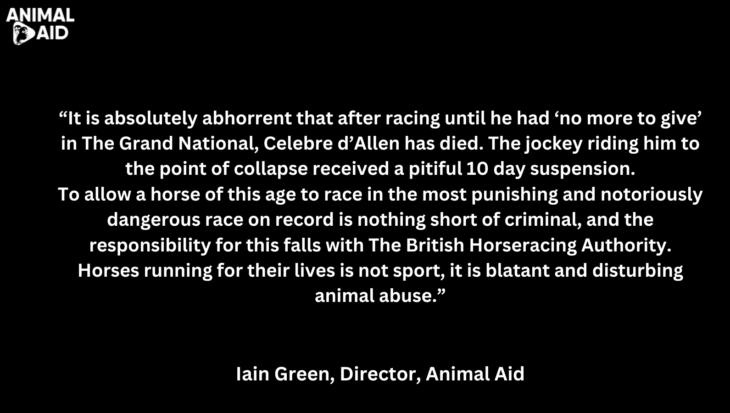The data comes from Beaten to the Line 2014, the latest in a series of analyses of whip offences undertaken by Animal Aid and published this week. Another alarming finding reported in the national campaign group’s dossier is that some riders breached the British Horseracing Authority’s (BHA) whip regulations on consecutive days and some even offended twice at the same event.
Most of the recorded breaches relate to striking a horse more times than is permitted (seven times in a flat race and eight in a jump race). The BHA – racing’s regulator – allows riders to beat their horses not only for reasons of safety but also for ‘encouragement’ – in other words, in an attempt to improve the jockey’s chances of winning a race. No other animals can be beaten lawfully in such circumstances.
It should be remembered, Animal Aid emphasises, that horses are thrashed within the rules on British courses virtually every day without attracting any penalty. In fact, a greater offence than horse-whipping, as far as racing’s regulator is concerned, is not to try hard enough to win a race and thereby raise suspicion of race fixing.
The total number of offences recorded in 2014 shows a modest increase on the previous year. Compared with the position prior to 2011, however, there is a substantial reduction. It was in that year that the BHA introduced stricter rules about how many times a horse could be beaten, and toughened up the penalties. At that time the annual number of rule breaches was running at nearly 900. Animal Aid drew very public attention to this shocking state of affairs, and the long process of rule-tightening began – a process marred by a series of compromises to appease rebellious jockeys.
While the number of recorded breaches has reduced significantly since 2011, race stewards now have unprecedented discretion allowing them to overlook a clear breach if, in their view, circumstances warrant it. The true number of annual offences, therefore, is difficult, if not impossible, to gauge.
Beaten to the Line 2014 calls for a ban on the use of the whip for reasons of ‘encouragement’. It supports its use only for genuine reasons of safety. This demand is echoed by a parliamentary early day motion, EDM 713, recently tabled by Torbay Liberal Democrat MP, Adrian Sanders, and which has, so far, been signed by 33 members. This initiative and other political moves by Animal Aid to curb unwarranted use of the whip have strong public backing. A YouGov poll commissioned by Animal Aid in 2014 found that 70 per cent of people oppose use of the whip.
Says Animal Aid Director, Andrew Tyler:
‘It is bad enough that horses continue to be routinely beaten and bullied by riders attempting to win a pot of money and some glory. Making the matter even worse is the pretence by the racing regulator, the British Horseracing Authority, that the whip is used to help horses stay “focused and concentrated” – suggesting that it is in the horse’s own interest to be publicly thrashed. The British people have made clear their strong opposition to the whip, and Norway’s racing regulators showed the way forward when, in 1982, they banned its use, except for strict reasons of safety. It is time British racing got the message.’
For more information

